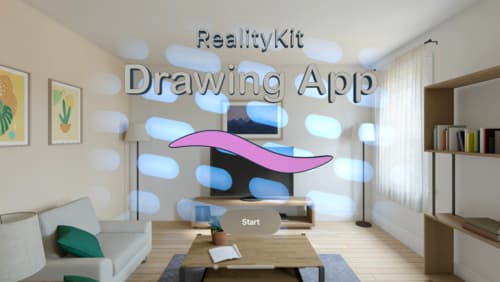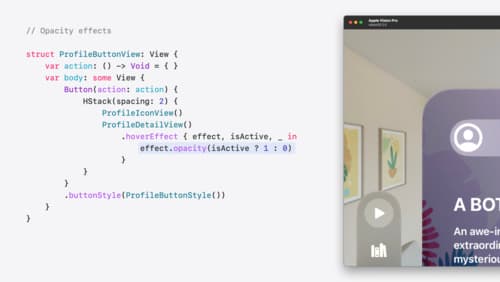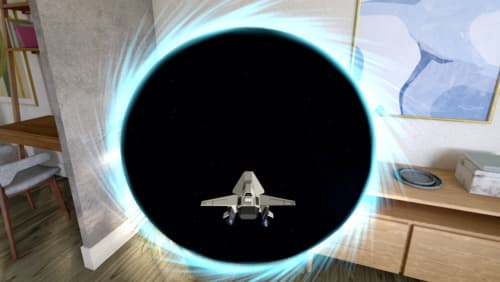我该怎么实现一个粒子效果
Asked on 2025-03-03
1 search
To implement a particle effect, you can use the information from the session "Build a spatial drawing app with RealityKit" from WWDC 2024. This session provides insights into creating a particle field that follows brush strokes, which can be adapted for your particle effect needs.
Here's a brief overview of how you can achieve this:
-
Particle Attributes: Define per-particle attributes such as position, color, and size. These attributes will help in controlling the appearance and behavior of each particle.
-
GPU Simulation: Use GPU for particle simulation to handle the dynamic updates efficiently. This involves creating a struct for particle attributes and using a Metal buffer for the simulation.
-
Vertex Data: Create a vertex buffer that includes the necessary attributes for rendering the particles. This buffer will be used to update the mesh on the GPU.
-
Shader Usage: Implement shaders to control the visual effects of the particles. This can include effects like glow or distortion based on user interaction or other parameters.
For more detailed guidance, you can refer to the session Build a spatial drawing app with RealityKit (13:57) which covers generating brush geometry and particle effects in RealityKit.

Build a spatial drawing app with RealityKit
Harness the power of RealityKit through the process of building a spatial drawing app. As you create an eye-catching spatial experience that integrates RealityKit with ARKit and SwiftUI, you’ll explore how resources work in RealityKit and how to use features like low-level mesh and texture APIs to achieve fast updates of the users’ brush strokes.

Create custom hover effects in visionOS
Learn how to develop custom hover effects that update views when people look at them. Find out how to build an expanding button effect that combines opacity, scale, and clip effects. Discover best practices for creating effects that are comfortable and respect people’s accessibility needs.

Discover RealityKit APIs for iOS, macOS and visionOS
Learn how new cross-platform APIs in RealityKit can help you build immersive apps for iOS, macOS, and visionOS. Check out the new hover effects, lights and shadows, and portal crossing features, and view them in action through real examples.
